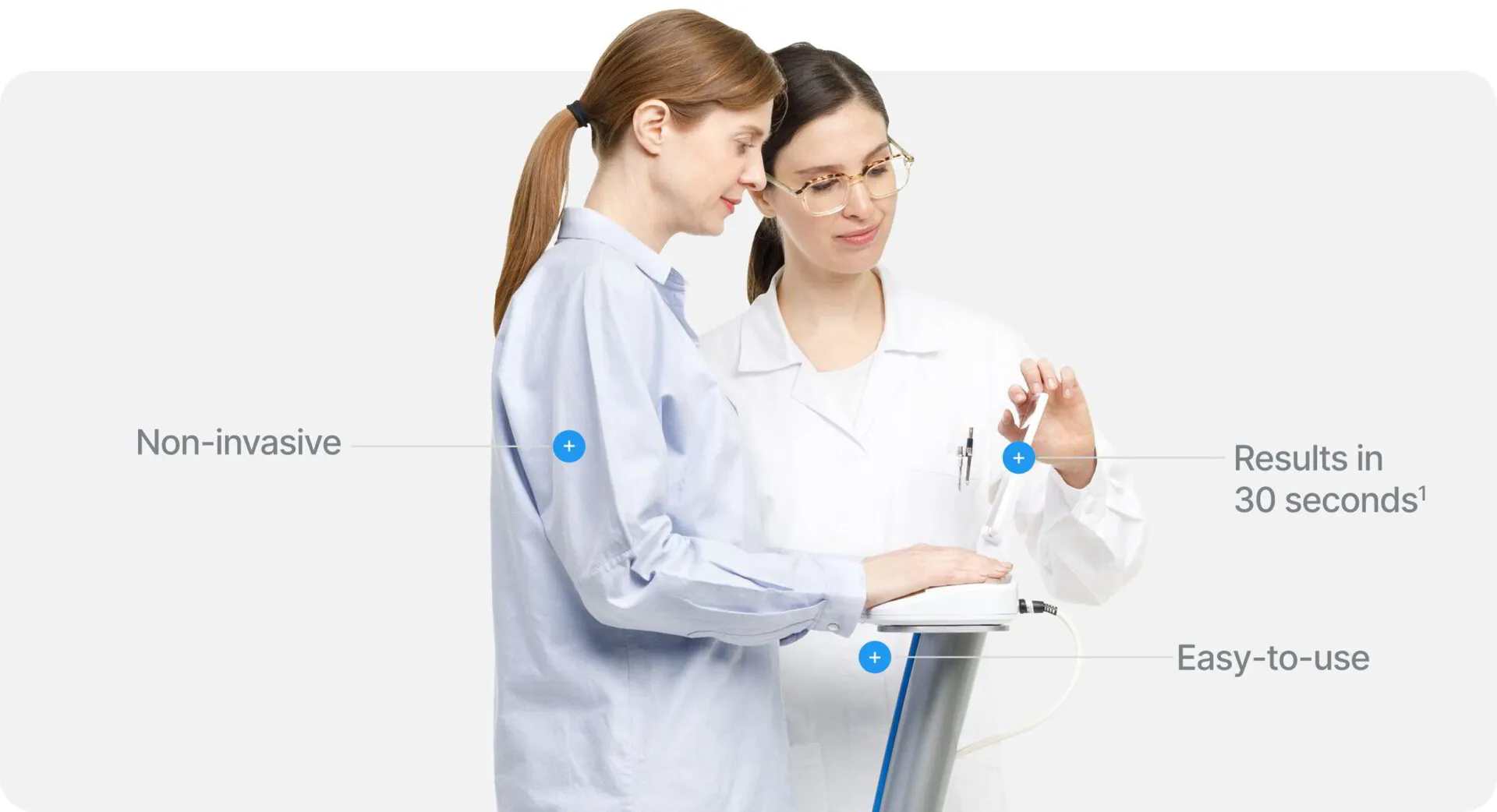
Sozo Bioimpedance Analysis
SOZO Digital Health Platform
Measures and tracks critical body data including fluid and tissue analysis, making it easier to set baselines and monitor progress.
Early Detection:
Detect changes and intervene early in the course of a disease.
Treatment Monitoring:
Monitor the impact of therapeutic interventions.
The Sozo Body Composition Analysis includes the following measurements:
Total body water:
All the water within a person’s body, including both intracellular and extracellular fluid. Expressed as volume (litres or pints) and percentage of total weight (%).
Extracellular fluid:
Free fluid that is not contained within the cells. Expressed as volume (litres) and percentage of Total Body Weight (%).
Intracellular fluid:
The majority of water in healthy adults. Muscle is ~75% water and makes up 50% of lean body mass. Fat is ~10% water. Decreases are associated with reductions in muscle mass, especially in women with lipoedema, any condition where mobility or exercise is compromised, people following or with a history of calorie-restricted eating, low protein intake, digestive disturbances that can interfere with the breakdown of protein for absorption, aging, and lack of resistance exercise.
Hy-Dex® hydration analysis:
Hy-Dex provides an indication of hydration status.
Skeletal muscle mass:
Includes all muscle that mechanically pulls on bones to create movement.
Optimal levels of muscle are associated with a reduced risk of health decline. Muscle mass decreases with age (sarcopenia) from age 30 onwards and muscle mass is often seen to be lower in women with lipoedema, with poor nutrition, and can be exacerbated by diseases (cachexia) such as cancer, chronic heart failure, and chronic obstructive pulmonary disease.
Low muscle mass increases insulin resistance (leading to weight gain and blood sugar dysregulation), and frailty, and may lead to osteoporosis, decreased independence, and reduced quality of life.
It is important to set a baseline and assess changes over time; especially when making dietary changes or taking prescribed medications such as GLP-1 agonists (Ozempic etc).
Fat mass:
The amount of mass a person has that is made up of fat. Expressed in kgs and percentage of total weight (%).
Fat-free mass (lean body mass):
The amount of mass a person has that contains no fat (lean body mass). Includes muscle, connective tissue, organs, body water and bone. Expressed in kgs and percentage of total weight (%).
Protein and Minerals:
Dry Lean Mass, including muscle, organs and bone. Protein & Minerals can be thought of as Fat-Free Mass minus Total Body Water. Expressed in kgs and percentage of total weight (%). The human body uses proteins and minerals as “building blocks”. Muscle is primarily protein and bone is primarily minerals so a change in this metric could indicate a change in either of these. It is important to observe changes over time. If protein and minerals are increasing, this is considered positive. If decreasing, this warrants further investigation.
Basal metabolic rate:
Daily amount of energy a person’s body burns when at complete rest. Expressed in calories.
Body Mass Index (BMI):
BMI is provided; however, this metric is flawed because it only considers weight and height – not body composition, which is especially important for women with lipoedema and lymphoedema.
Examining other metrics such as Skeletal Muscle Mass, Total Body Water and Fat Mass will provide better insight into a person's body composition.
Phase angle:
Indicator of cell health. More research needs to be done, but this is thought to be an indication of cell membrane integrity and overall cellular health and function.
Active Tissue Mass (ATM):
All metabolically active tissues in the body, including intracellular fluid, muscle, organs, and nerve tissue. Loss of ATM may be an early indicator of malnutrition.
Extracellular Mass (ECM):
All metabolically inactive tissues in the body.
L-Dex® lymphoedema index:
An L-Dex score is a unique measurement of fluid buildup in a limb which is at-risk of developing lymphoedema compared to a healthy limb. It was developed by ImpediMed to aid in the clinical assessment of lymphoedema in an arm or a leg - especially important to set a baseline that can help to recognise lymphoedema in its earliest stages, when it may be reversible.
SOZO uses ImpediMed’s patented bioimpedance spectroscopy (BIS) technology to provide an accurate measure of body composition. Unlike other bioimpedance technologies, ImpediMed’s BIS technology measures impedance at 256 frequencies up to 1,000 kHz.
Discounted for a limited time!
Book your 15-minute session with Megan Pfeffer, which includes the Sozo analysis & interpretation. Only available at Megan Pfeffer's Camberwell office - G03, 685 Burke Rd, Camberwell BY APPOINTMENT ONLY.
